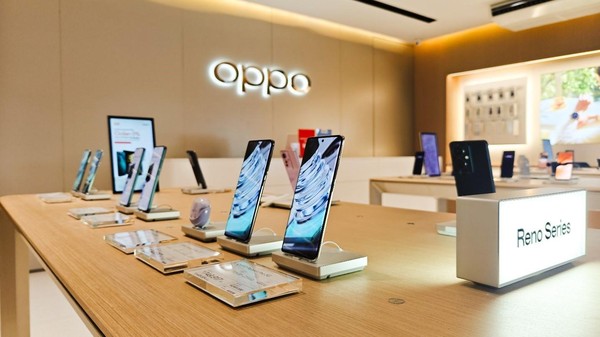The Southeast Asian smartphone market continues its upward trajectory, with Canalys reporting a significant 15% year-on-year growth in Q3 2024, reaching 25 million units shipped. This growth highlights the region's continued importance as a key battleground for smartphone vendors. OPPO emerged as the leader in this competitive market, shipping 5.1 million units and capturing 21% of the market share, a 3% increase from the previous year. The success of OPPO is largely attributed to its rebranded entry-level models, the A3x and A3, which were able to cater to the high demand for affordable smartphones in the region.
Samsung, with a 16% market share, secured second place in terms of shipments, followed by TRANSSION in third with 16%. Although Samsung has maintained a strong position, its strategy has shifted from volume-based growth to prioritizing average selling price (ASP) growth. This strategy reflects Samsung’s ongoing premiumization efforts, which focus on expanding its presence in higher-end market segments rather than chasing sheer shipment numbers. Meanwhile, TRANSSION, which includes brands like TECNO, Infinix, and iTel, experienced a substantial 46% growth in shipments compared to the same period last year, although the company’s rapid growth appears to be plateauing. The shift towards profitability and value enhancement will be key for TRANSSION in the coming months.
Xiaomi, despite facing intense competition, held onto a 15% market share, shipping 3.9 million units. The Chinese brand's growth was driven by competitive pricing, particularly through models like the Redmi 14C and A3, which appealed to budget-conscious consumers. Vivo, with a market share of 10%, rounded out the top five, maintaining its position despite a slight decline in shipments compared to last year.
However, the impressive volume growth in Southeast Asia comes with a few caveats. The region has seen a 4% drop in ASP, which is indicative of the increasingly challenging dynamics in the mass market. Vendors are finding it difficult to differentiate beyond price, resulting in a reliance on aggressive promotions and discounts. The competition has led to a “price war” in the low-to-mid range price segments, particularly between US$100 and US$300. But this strategy is becoming unsustainable due to rising material costs and the increasing expense of running promotional activities.
In response to these pressures, smartphone vendors are consolidating their entry-level portfolios to reduce costs and improve product segmentation. For example, OPPO has simplified its entry-level offering with the A3x, a single model that drives volume through better pricing. Similarly, Samsung has streamlined its portfolio by not launching the A0s variant of its A06 series, thereby creating clearer differentiation between the A06 and A16 models.
Indonesia remains a particularly critical market for many of these brands. Despite challenges such as the recent iPhone 16 ban due to regulatory disputes, Chinese OEMs that meet local investment and localization requirements have found success. In fact, the smartphone market in Indonesia remains highly competitive, with local partnerships and government support playing crucial roles in vendors’ ability to succeed. As the rollout of 5G continues to accelerate, vendors are preparing to adapt their offerings to meet the growing demand for affordable 5G devices. OPPO, for instance, has made significant inroads by offering competitive 4G devices in the US$175 to US$250 price range, benefiting from the current gap in affordable 5G offerings.
The shifting landscape of 5G in Vietnam also presents both challenges and opportunities. While the high activation costs of 5G devices have made it difficult for vendors to offer affordable options, Canalys predicts that the situation will improve as network operators and the government push forward with 5G initiatives. Samsung, in particular, is well-positioned to regain market share due to its early lead in 5G technology and its strong relationships with telecom operators in the region.
Looking ahead, Canalys anticipates that the ASP for smartphones in Southeast Asia will rise again, despite the current dip. As brands invest more in premium experiences and diversify their channel strategies, there will be greater segmentation in the market. OPPO and Samsung are increasing investments in premium experience stores, which will help drive brand perception and capture replacement demand. Meanwhile, brands like HONOR and Xiaomi are expanding partnerships with telecom operators in countries like Thailand and Malaysia to boost their reach.
Southeast Asia continues to be one of the most dynamic and fast-growing regions for the global smartphone market, with each vendor vying for a slice of the expanding consumer base. However, achieving sustainable growth requires balancing volume with profitability and navigating the complex local dynamics that make each country unique. With emerging technologies like 5G and continued efforts to localize offerings, the region’s smartphone market is poised for continued transformation in the coming quarters.
Read More






 Thursday, 25-12-25
Thursday, 25-12-25







